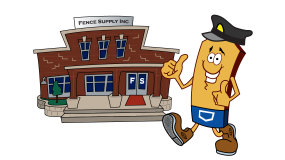If you own a dog, you may have considered trying to keep your dog in your yard, where it’s safe, or keep undesirable critters out, with an electric fence. You might be surprised to know that there are electric fencing options for your pets. These options are safe, humane, and people-friendly, and when installed properly, will train your pet in no time that digging or climbing is not allowed.
For better planning of your yard perimeter electric fence, the first thing you should do is know your own dog and its behavior. The following are the qualities of your pets that are relevant to the installation of your electric fence:
- Jumping capacity – knowing how high your dog could jump will help you determine the height of your fence. The higher their capacity to jump, the higher your fence should be.
- Athletic composition – If your dogs are bigger and more muscular, you’ll need a multi-level, multi-wire fence. But for less brawny, “jumpier” dogs, less levels will suffice.
- Hair type – the type of fur your dogs have will determine which type of electric fence charger is appropriate to use. The more fur, the more voltage you need.
- IQ – believe it or not, your dog’s IQ may help you in planning your electric fence. Bright dogs would easily grasp the perimeter of your electric fence through exposure to it while less intelligent dogs may need constant reminders that there is an electric wire that would prevent them from getting out of your yard. For intelligent ones, you may opt to use steel or aluminum wire. For the not-so-smart ones, it’s better to use tape to make the fence more visible to them.
Another thing that you should consider in installing your yard perimeter fence is the vegetation around your premises. You should make sure that there are no shrubs, weeds, ornamental plants, or other vegetation in contact with you electric fence. These would drain energy from your fence.
Yard perimeter electric fences are similar and at the same time different than other electric fence types (e.g. fences for cows, horses, and other livestock). The similarity is that you are installing the same type of fence, and you will need the same components. Fence chargers, fence wires, grounding systems, fence posts – all of these are still the same vital parts for you yard perimeter electric fence.
There are a few differences and they are as follows:
- Wire levels – to fence in your pets, you may need a greater or lesser number of wire levels of depending on the type of dogs you own. The spacing of your wire levels is also smaller than those for livestock fences. Ideal wire level spacing for dog fences ranges from 4 inches to 12 inches.
- Lowest fence level – for dog fences, you need your lowest fence levels to be nearer to the ground. This is to prevent your dogs from escaping by digging the ground below the fence.
- Accessories – you may need more accessories for your dog fences. These fences may have a low electric current — not enough to do too much harm — but they will certainly cause annoyance to anyone who come in contact with them. Having adequate warning devices around your fence will ensure everyone stays safe and happy.



